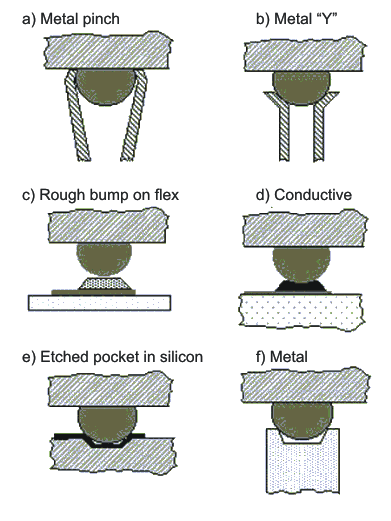SPRAA99C March 2008 – May 2021 AM3351 , AM3352 , AM3354 , AM3356 , AM3357 , AM3358 , AM3359 , AM4372 , AM4376 , AM4377 , AM4378 , AM4379 , OMAPL138B-EP , TMUX646
6.2 Contacting the Ball
A number of different approaches for contacting the solder ball are shown schematically in Figure 6-1. The pinch style contact has been used extensively for contacting solder balls in conventional BGAs and is starting to be proposed also for the most advanced fine pitch CSP packages.
The most common methods used for contacting as small as 0.4 mm pitch CSP packages are either metal pinch (a) or metal (f). Both methods provide the most reliable solutions with less ball deformation and small socket form factor at an affordable cost. Texas Instruments Interconnect Business Unit (TI IBU) has designed both pinch and micro tuning fork (metal type) contacts that satisfy all of these requirements. Further information on the availability of these sockets can be obtained from your local TI Field Sales representative.
 Figure 6-1 Approaches for Contacting the Solder Ball
Figure 6-1 Approaches for Contacting the Solder Ball